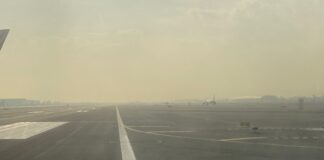

The final quarter of 2013 saw growth, but since the start of 2014 “air cargo volumes have basically been flat,” according to the International Air Transport Association (IATA).
In its comparison of the month of March this year and last year, IATA decided to comment on the fourth quarter of 2013 and the last three months and paint a more dire picture than the data it actually released suggests. For example, it points to higher demand in January than in March.Looking at March during the two years, the industry-wide figure is a freight tonne kilometre (FTK) increase of 5.9 per cent for the whole market, for international cargo. Domestic was an anaemic 0.8 per cent. The domestic figures may reflect the reality, as the March comparison and the year-on-year assessment both see low growth in domestic figures. For 2013 and 2014 the domestic FTK growth is 1.1 per cent. For Available FTK (AFTK) it is 2.1 per cent. For the two months of March, AFTK is 0.9 per cent. Freight load factors remain weak across all comparisons with a high of 53.1 per cent for the international March comparison and a low of 29.9 per cent for the year-on-year domestic figure.”Cargo markets had a boost in the last quarter of 2013, but have now levelled off. It is a competitive industry with growing capacity chasing weak demand. The business cycle will eventually swing upwards. But the air cargo industry also needs to improve its value proposition if it is to attract growth when markets improve,” says IATA’s director general and chief executive officer, Tony Tyler. The markets that have improved begin with Africa. While it contracted in February, compared to 2013, its March figure sees it bounce back with 5.9 per cent. However, the first quarter picture is not so good, with just 1.5 per cent growth. North and Latin America has fared worse with first quarter growth of 0.7 per cent. Europe is seeing better days with IATA reporting continued growth since mid-2013 from the eurozone. However, its March 2013 and 2014 comparison FTK figure is less than half that of the Middle East, at five per cent, and less than Asia Pacific’s 6.9 per cent. However, China is seen as a weakened economy that cannot be relied on to drive Asia Pacific growth.Faced with cheaper, albeit slower, competition from ocean shipping, Tyler has also reminded the industry that it needs service improvement. “Modernising air cargo processes and infrastructure offers the potential to cut end-to-end shipping times by up to 48 hours. We cannot let market doldrums hold us back.” The 48 hours Tyler refers to is a challenge set down to the industry by the organisation’s retiring global head of cargo, Des Vertannes. At IATA’s world cargo symposium, held in March, he challenged the industry to cut end-to-end shipping times by 48 hours by 2020. For 40 years that shipping time has stayed at six to seven days.













